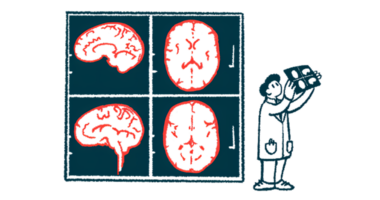Research Targets Neural Implants to Treat Brain Disorders
Parkinson's patients might benefit from 'a pacemaker for the brain'

Neural implants combining artificial intelligence with microelectronics could directly modulate the brain’s activity to help treat brain disorders, including Parkinson’s disease.
“Neurons talk to each other in part via electrical signals, and a therapeutic neural implant produces electrical stimulation – like a pacemaker for the brain. In cases of tremors or seizures, the stimulation attempts to restore the neurons to a normal condition,” Xilin Liu, PhD, assistant professor in the Faculty of Applied Science & Engineering, University of Toronto, Canada, said in a press release.
The technology — complementary metal-oxide-semiconductor, or CMOS — integrates neural implants into miniature silicon chips (sized 3 x 3 millimeters), using the same process used to fabricate chips for computers and smartphones. It allows the reduction of the device’s dimensions and power consumption, thereby limiting the risks associated with the implant’s surgical procedure and long-term use.
The team, headed by Liu, integrates the neurotechnology center CRANIA — Center for Advancing Neurological Innovation to Application. CRANIA results from a collaboration between the University of Toronto and the University Health Network. In the center, electrical and computer engineers work together with neuroscientists, data and material scientists, and clinicians, to develop new treatment options for patients with brain disorders.
Liu’s team combines microelectronics with artificial intelligence to improve neural implants’ clinical effectiveness and reduce adverse events. This is particularly important for patients who do not respond well to current medications.
In a recent project, the team used a type of artificial intelligence, called deep learning, to create models that use algorithms trained to extract information when encountering new data.
For example, in Parkinson’s patients who do not respond well to medication, deep brain stimulation using a neural implant is a currently available surgical treatment that stimulates targeted regions of the brain with electrical impulses. Deep-learning technology might be powerful enough to improve the detection of the optimal timing to stimulate, avoiding adverse effects such as excessive neural stimulation.
“Most existing implants produce electrical stimulation at a constant rate, regardless of the patient’s condition. With [deep learning], we can activate the neural implants at the optimal time and only when necessary,” said Liu.
However, deep-learning models come at a high cost, considering that all processing must run inside the implants. “The cloud would provide more processing power, but you can’t have an implant fail because it loses telecommunication service — when a patient goes into an elevator or airplane, for example,” Liu said.
Adapting the model
To overcome this issue, the team developed techniques to adapt the models to specific conditions. In a previous study published in the Journal of Neural Engineering in 2021, the team demonstrated the ability of neural implants’ deep learning to detect epileptic seizures.
In that work, the team developed deep learning methods that could detect seizure events with a sensitivity between 87.4% and 97.6 %. These also were viable to predict seizures for early warnings.
This technology can be applied to other brain disorders, including Parkinson’s disease, chronic pain, depression, and dementia.
The team also is addressing the application of such therapies to Alzheimer’s disease. “Impaired sleep has been associated with Alzheimer’s, and many people suffer from different levels of sleep disorders,” said Liu, adding that they are investigating “neuromodulation techniques to improve sleep quality by reinforcing or inhibiting certain brain rhythms.”
“There’s so much going on in the brain,” Liu said, noting that up to one billion people worldwide suffer from brain disorders. There is a “need [for] a range of experts to understand and provide solutions for these disorders, which will only become more common as human life expectancy increases,” he said.







